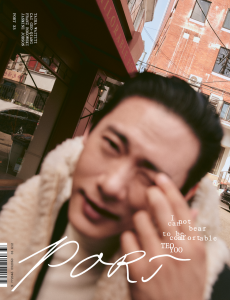In conversation with Santoni, the heritage Italian shoemaker

Some three hours’ drive from Rome in the storied town of Corridonia, the heart of Italy’s Marche region, lies the Santoni headquarters. Just like its native land, it’s a place of immaculate beauty – a sprawling campus of recycled steel, aluminium and glass flooded with natural light and shrubbery. It is here where the Italian heritage brand approaches shoemaking as a noble art, producing hand-crafted contemporary footwear to exacting standards.
Established in 1975 by Andrea and Rosa Santoni, the company initially specialised in men’s shoes, made and sold exclusively in their design atelier, before gradually expanding with a women’s offering and an array of leather goods that include belts, wallets and Saffiano backpacks. Today, the business has been handed over to Andrea’s son, Giuseppe, who has worked to preserve its artisanal savoir-faire while transitioning to a more sustainable future.

“All our shoes are created without excess, without things that are too strong, too particular,” says Santoni, the brand’s chairman, speaking on the timelessness of their Italian creations. “Like many heritage brands, we offer classic shapes like lace-up, moccasin and buckle, but what we change is the length, the design. These are very small modifications, but they offer a very modern proportion. It’s like the cut of a suit. A suit is a suit, two-button, three-button, double-breasted, but the proportion makes the difference. That’s what makes Santoni timeless.”

Indeed, a glimpse into Santoni’s headquarters reveals a deep material knowledge and attention to detail, as each shoe is interpreted into colourful leathers and knit weaves by a team of skilled makers. “Craft is the absolute essence of our brand,” explains Santoni, highlighting the intricate handwork of the maison’s artisans, applied to such features as its signature bright-orange sole, which is sewn and painted by hand, ensuring each shoe is entirely unique. “Our brand maintains traditional techniques, but with a modern approach. This is done with the very simple, yet at the same time complicated, process of putting together younger designers and traditional shoemakers. The two energies need to work together. We have young designers that create new shapes, new proportions and an absolutely contemporary product, but in full respect of tradition, fitting and the quality process.”

What further elevates Santoni’s craftsmanship is the storytelling woven into each collection, presented seasonally through a unique narrative. “We always start with the story,” says Santoni, of the brand’s approach to shoe design. “Then, we develop the story with colour and, finally, the end product.” For the brand’s current fall/winter collection, Santoni celebrates the importance of its heritage and values with new urban silhouettes that include the unisex Andrea loafer – a re-edition of an iconic ’80s model cut from soft nappa-esque leather in an ankle-bearing form with tassel detailing. Meanwhile, signature styles have been reworked in fresh colourways, including the Double Buckle sneaker, now available in baby pastel shades of blue and pink, and the Sneak-Air, a ’70s-inspired trainer newly enriched with a bold gradient finish achieved through a targeted air-spray technique. “My aim and the aim of my people is to create objects of desire. So, we always try to experiment with new materials, new leathers, new perceptions in a way that’s unique and special,” notes Santoni. “Our fall collections for men and ladies evolve with new shapes, volume and colour. For us, colour is our trademark. We try to create a chromatic journey with our unique pieces, that are always delicate and smooth but also linked to the season and the mood of the collection,” he continues. “With fall, for example, we use a lot of darker greens and natural colours to create a differentiation between our seasonal collections.”

Another key focus that Santoni has spearheaded since taking over as CEO of the company when he was just 21 is the brand’s step into sustainability. “We created our new production facility with total respect for the environment,” he notes, adding that the materials used in the construction of the building are 90 per cent recyclable. It also features a dedicated system for the recycling of rainwater and, most notably, all the buildings – the offices and three production plants included – are covered by almost 4,000 photovoltaic panels that ensure the production of more than a million kilowatts per year of green energy. With this, Santoni shoes are created with an entirely carbon-neutral impact.

“We’ve also started to develop a more eco-conscious process for the production of our shoes,” says Santoni. “We use natural colours and leather tanned with vegetable tanning, as well as non-toxic glue with a water base instead of oil,” he explains. “We are really taking a green approach so we can be responsible with our work. We also engage all of our supply chains to be in line with our philosophy and elevate their quality standard and level of respect for the environment.”

With social and sustainably-minded innovation firmly at the forefront of the company, what are Santoni’s plans for the future? “At the moment, we’re working on expanding our group of accessories and products into a wider range with a stronger, more detailed connection to our values and our excellence,” he replies. With the launch of a new boutique in London’s famed Harrods department store, Santoni hopes to solidify the brand as an international authority on state-of-the-art shoemaking. “The sky’s the limit,” he says. “Saying that, we have a lot of really ambitious plans in terms of creating the DNA of our ladies’ world, which is something we started, but understand we need to get stronger and more consolidated,” he adds. “Our aim is to be the point of reference for quality and timeless design with customers that can’t wait to get our products. Creating the object of desire is the secret of success.”

This article is taken from Port issue 33. To continue reading, buy the issue or subscribe here




